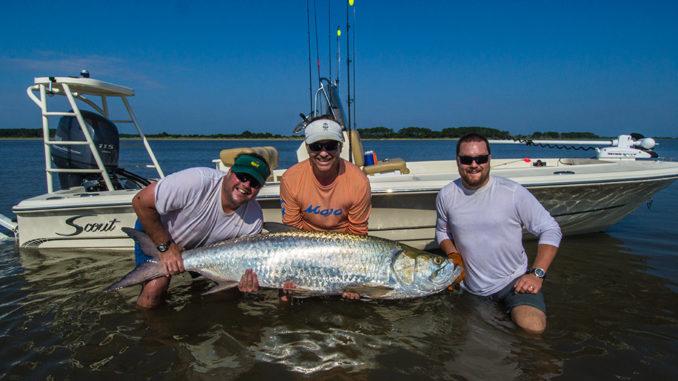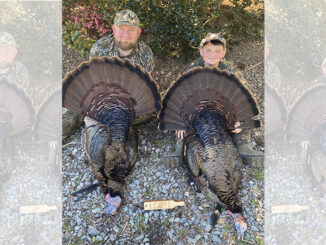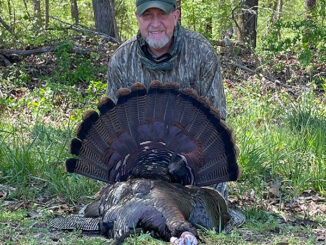
Silver kings have invaded all parts of Winyah Bay, following bait
August is normally a month when fish start to frustrate fishermen enough that they empty their tackle boxes trying to find something that will work. This year, that’s been true in the Georgetown area, with one massive exception. Tarpon have strapped on their feed bags, and fishermen are thrilled.
Several of the area’s guides – Robert Mayer, Steve Roff, Jordan Pate and Tommy Scarborough – have all reported a rise in success on tarpon lately. And Pate couldn’t have been any more clear about the outlook for catching one of these silver beasts.
“The fishing is the best it has been all year and getting better by the day,” said Pate (843-814-7900). “Just last week, behind the full moon, we had multiple-fish days.”
The estuaries around Georgetown provide ideal conditions for tarpon during their summer stay in the area. Water from five rivers flows past the historic seaport village before dumping into the ocean, and the freshwater input and massive marshes creates ideal nursury grounds for fish and crustaceans that tarpon can’t live without.
By the end of August, the amount of food for tarpon is practically endless, from the freshest of waters out to the super salty fringe along the ocean. Pate is setting out his lines in many places right now and putting multiple fishes in the boat each week.
“We are finding tarpon everywhere in Winyah Bay, from up past the fresh/saltwater dividing line in the Waccamaw River all the way out to the ocean along the beaches,” said Pate, who lets the tides and weather dictate where he starts and stops each day’s trip.
“The tides and weather affects the bait flow, primarily menhaden and mullet. Once you understand how these factors affects the bait, it will allow you to intercept a big school of rollers,” Pate said. “Pay attention to what tarpon are feeding on, too, and load your baitwell with whatever it is, and then match the size, because matching the size is equally important as matching the brand of baitfish.”
Pate will use both live and artificial baits resembling the tarpons’ food preferences. His first choice is to free-line live baits on an 8/0 circle hook tied to 6 feet of a 100-pound monofilament leader. While he can’t cast it for any distance, there is nothing any better looking than a free-swimming meal moving a little slower than normal and right in the strike zone of a hungry tarpon.
As far as artificials, Pate likes D.O.A.’s swimming mullet due to its lively action when pulled through the water. He uses a shorter leader, only 3 feet, to enable long casts, and he goes slightly smaller, using 60- to 80-pound fluorocarbon, so the lure will have better action and his line will be more invisible.
The next six weeks are setting up for more fantastic fishing, with the fall mullet run right around the corner.
“Locate fish in different areas, learn their patterns, and never be scared to adjust your techniques and equipment to lure one onto the hook,” Pate said.





Be the first to comment